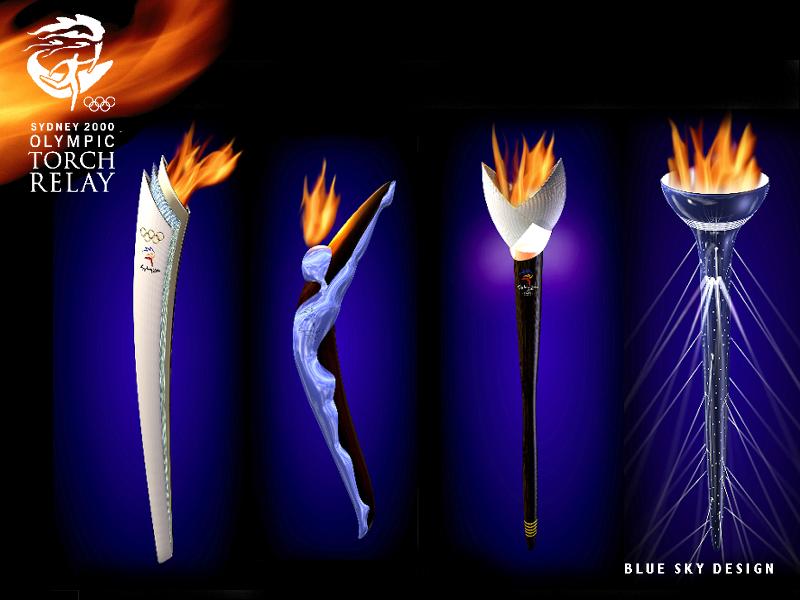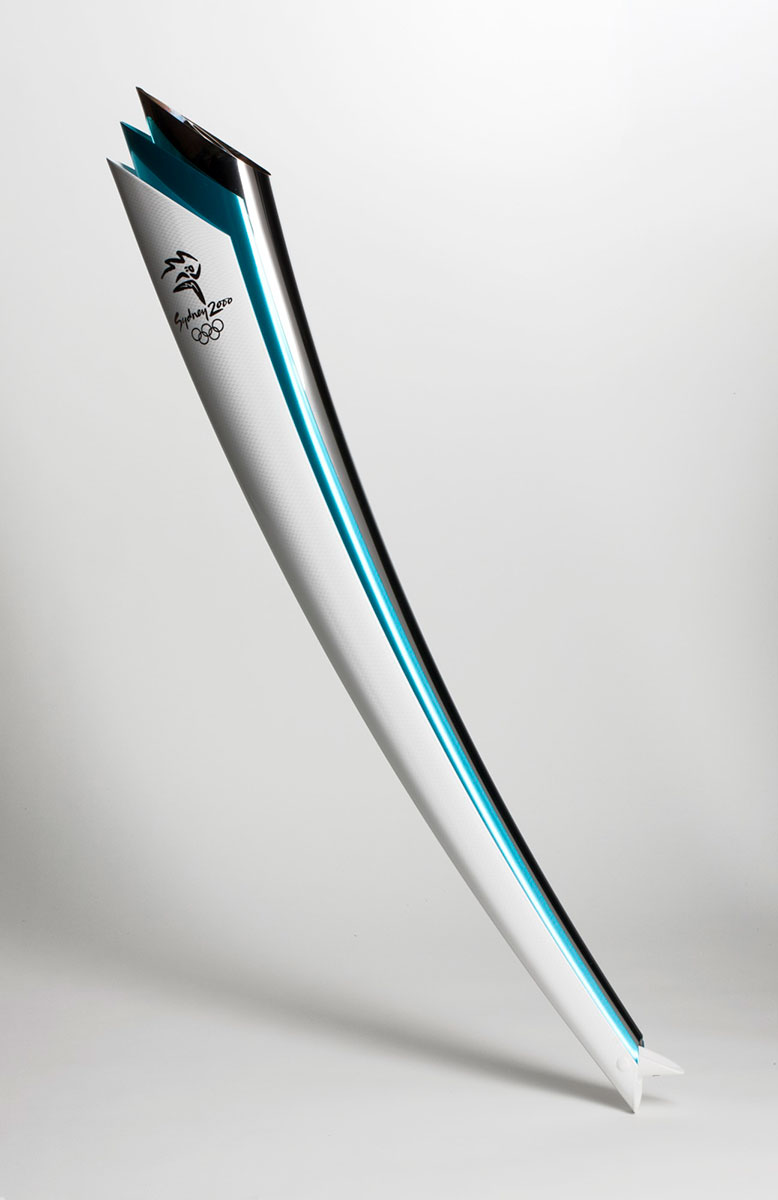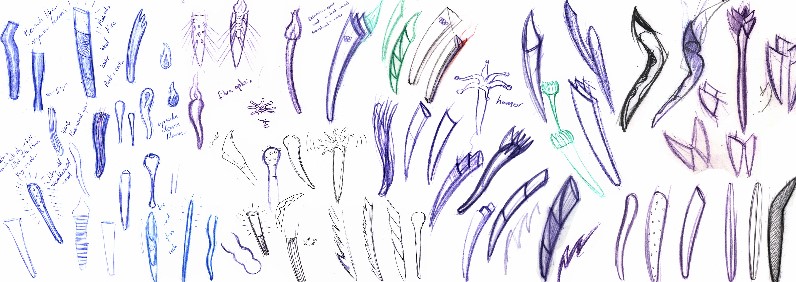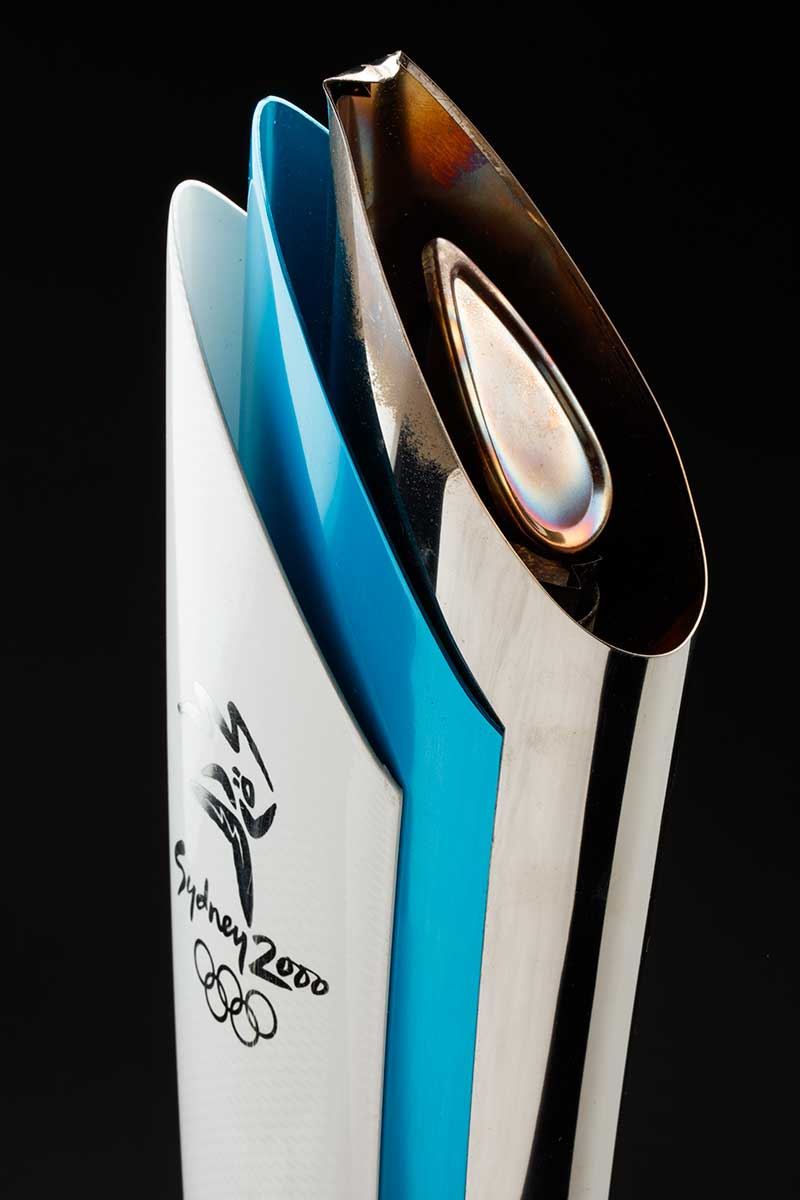The Olympic torch is one of the most recognisable objects from the Olympic Games.
I delved into the torch design brief for the Sydney 2000 Olympics to discover how this important object came to be.

The four Blue Sky Design approaches developed in response to the design brief for the Sydney 2000 Olympic torch. Blue Sky Design
Designing an Olympic icon
In the late 1990s, the Sydney Organising Committee of the Olympics (SOCOG) worked with the International Olympic Committee (IOC) to develop a design brief that would push the boundaries of Australian design innovation and manufacturing excellence.

The design brief was clear:
- The torch should weigh less than 1.5 kg so that it could be held comfortably by torch bearers of different ages and abilities.
- More than 14,000 units needed to be produced using environmentally responsible materials and manufacturing processes.
- The torch should be free of polluting emissions and waste when being used throughout the relay.
- The torch must represent the spirit of Sydney, Australia and the Olympic Games.
The brief included some very practical requirements as well.
The torch needed to remain alight for the 20-minute time frame for each runner to complete their leg and be able to withstand the rain, snow and 90 km/h winds!
A designer’s response
Blue Sky Design decided to work on a submission by studying the ancient Olympics and the heritage of the modern games including previous torch designs and how they represented national culture and the technology of the day.
The design team developed hundreds of early concepts before narrowing them down to four different approaches. The first, described as ‘Symbolic’, was inspired by a boomerang, the sails of the Sydney Opera House and the blue sea of Sydney harbour.
The second was inspired by the body of an athlete, while the third was more traditional with a jarrah handle. The fourth focused on a more high-tech approach with a lightweight, translucent carbon fibre handle.

Early sketch ideas from Blue Sky Design. Blue Sky Design
Blue Sky Design wins through collaboration
Blue Sky Design was chosen as one of four companies to progress to the final selection round and asked to further refine their ‘Symbolic’ approach.
Blue Sky realised that to win the contract, they needed to partner with experts in other fields. They chose cutting-edge engineering company GA & L Harrington to look after production issues and a model-making company, Box and Dice, to produce a fully working model to show the selection committee. Blue Sky also partnered with the University Centre for Design at Royal Melbourne Institute of Technology (RMIT) and Philips Electronics.
In 1999, SOCOG officially selected Blue Sky’s ‘Symbolic’ concept to represent the Sydney 2000 Olympic Games. The IOC was so impressed with the quality of the Sydney Olympic torch, they later awarded the 2004 Athens Olympic torch manufacturing contract to GA & L Harrington.
Torch materials and environmental impact
GA & L Harrington chose to use stainless steel for the inside layer of the torch as an ideal material to house the fuel system.

The middle turquoise blue layer was achieved by anodising aluminium. To achieve the white outside layer’s surface texture, the aluminium was treated with a white powder coat finish.
The torch was then immersed in a water bath and a transfer film applied. The film was designed to capture the feel and appearance of the roof tiles of the Sydney Opera House.
The fuel and combustion system produced a clean non-toxic flame and was so safe to use that the technology led to future innovations across several products including kilns, camping stoves and furnaces.
Torch components could also be disassembled so they could be recycled and reused.
Olympic torch journey
The torch was held by over 11,000 people in the 2000 Olympic relay including members of the Blue Sky Design team and the Harrington production team.
The last six torch bearers were famous Australian women, including Cathy Freeman who had the honour of climbing several flights of stairs before lighting the Olympic cauldron and officially opening the Olympic Games.
In our collection
